There have been many exciting developments in the study of alien worlds this month, not the least of which being discovery announcements for a new world next door in the triple star system Alpha Centuari and another, much further away within a hierarchical quadruple star system that has been re-christened 'PH1'. This latter case is the first confirmed exoplanet from PlanetHunters and was first noted by veteran project members Kian Jek and Robert Gagliano! For more on its discovery and characterization check out the official PlanetHunters Blog.
These events have driven a flood of activity on PH Talk. Many are new users assessing light curves for the first time, but some are individuals dropping by to check up on past favorites. Such was the case with 'Trenton1979' and his bump given to the thread for Kepler target KIC 3732035.
A possible exoplanet candidate was noted here over a year ago in the entry for Quarter 1. An updated check reveals that at least five plausible transits exist in the public data set that can be culled from the noise, occurring at an interval of ~139 days.
The host star is a Type G of estimated 5786(K) and 0.9 radius compared to our sun, found at a magnitude of 14.2 in the Kepler FOV.
Kian Jek's observations:
"The light curve was detrended, preserving the transits and folded.
During this process, it was discovered that the 2nd transit at 292 was
problematic, as it was ill-defined, too shallow and short in duration,
so it was removed. With the remaining 5 transits, I was able to get a
reasonably good transit curve fit above (original polyfit in green)."
"The transit duration still comes out a little on the long side, at
10.83 hr, given that a central transit of a 0.864x Rsol star is 8.33 hr,
so it's possible the stellar radius is wrong, or we are looking at an
eccentric orbit. The radius of the planet, assuming a 0.864x Rsol star,
is around super-Earth size, at 2.11x RE, and an orbit of 0.51AU. Mass of
the planet estimated (very roughly) to be 9.6x ME. The Teq is
approximately 328 to 335K, which is very hot, but water is still liquid,
so technically this planet is in the HZ, although its orbit lies
between Mercury and Venus, and if it has an atmosphere, could turn out
to be much hotter than this."
Although no clear centroid shifts appear to accompany these transits, they are shallow and thus proper follow up by observatories would be required to completely rule out the possibility that this is a false positive caused by a faint background binary.
More transits seem to be present in the Q10-Q13 data; if accurate on the radius this target is amongst the smallest potential exoplanet candidates characterized at PH Talk so far!







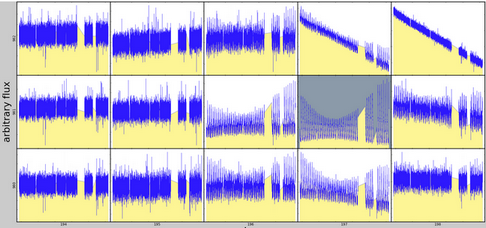
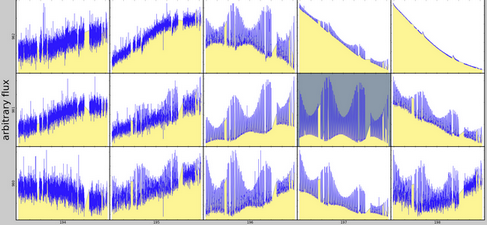







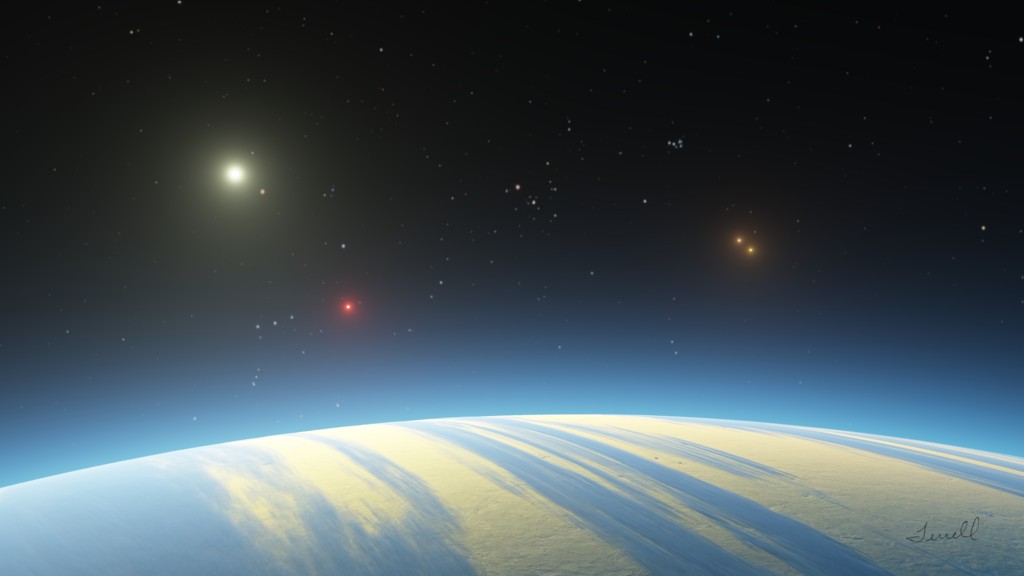



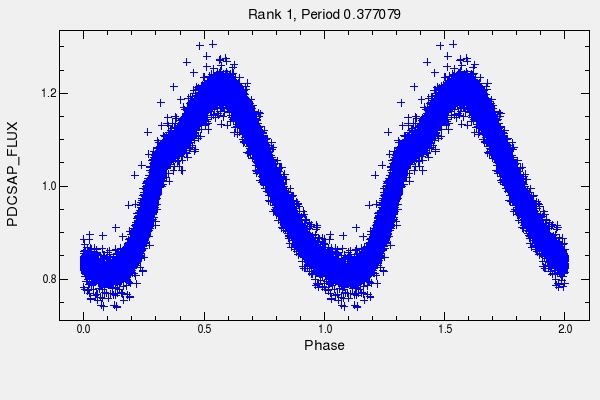
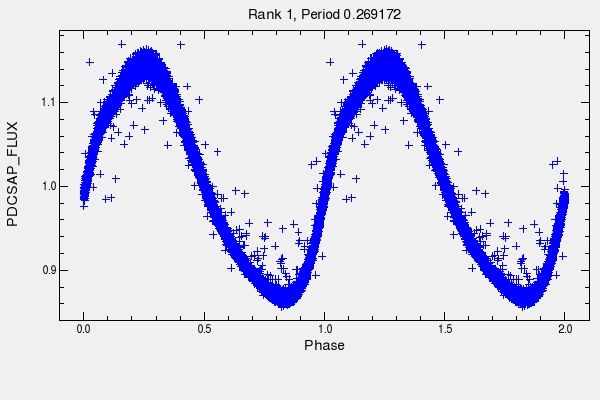



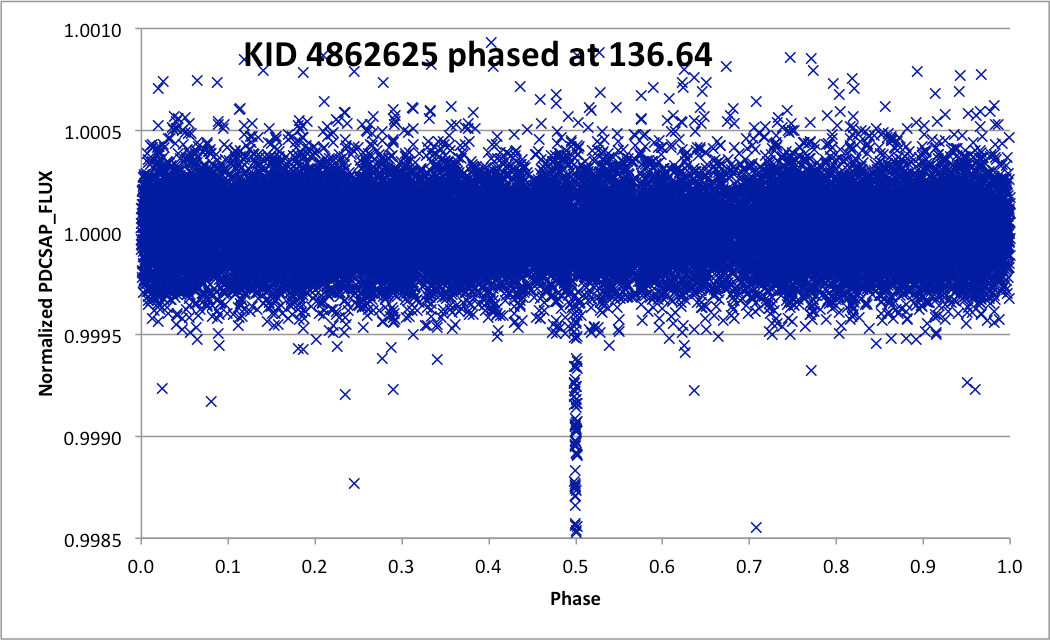
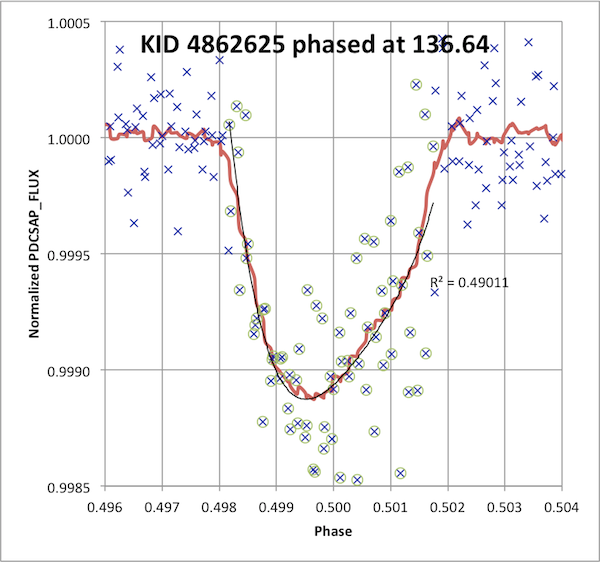
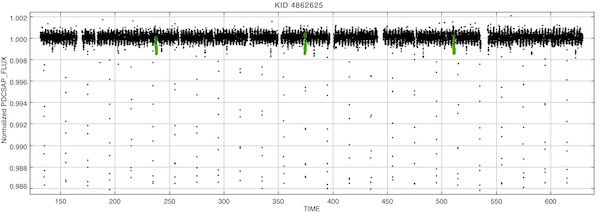
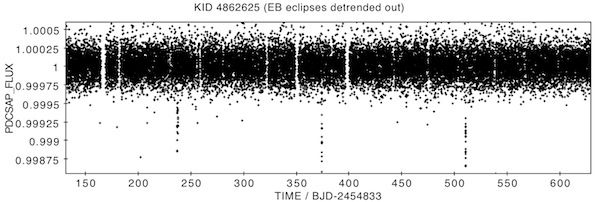


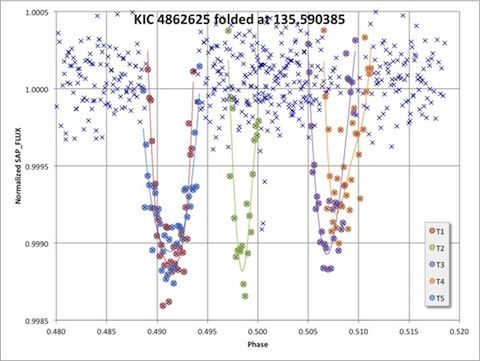
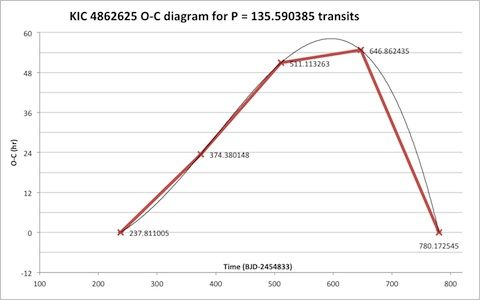


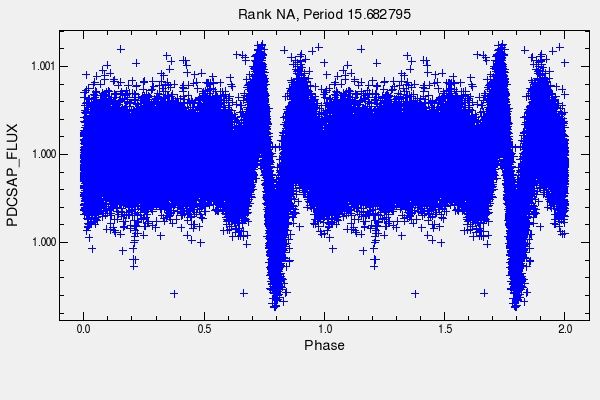


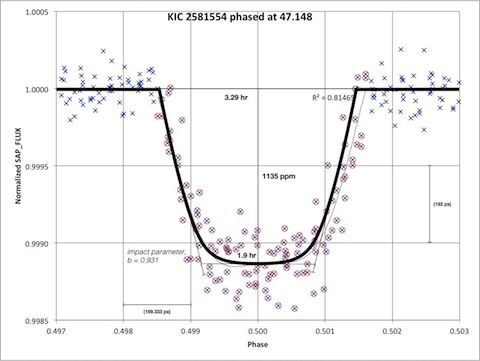
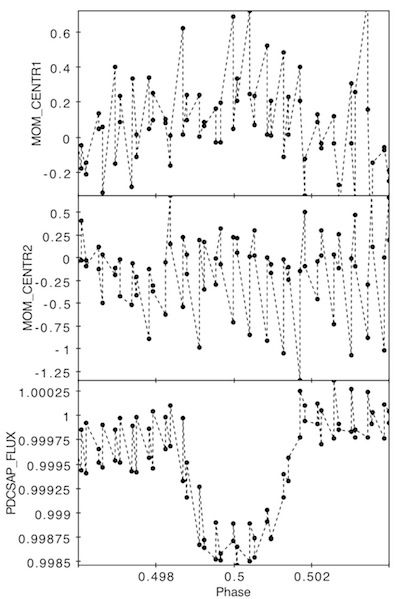


UPDATE: Oh - I know why the light curve is so crappy and not because of contamination - Q2 was imaged by mod.out 2.3 and therefore a victim of the #fp16 glitch!